Compact SUV comparison test: Tata Nexon v Maruti Suzuki Brezza v Kia Sonet v Hyundai Venue v Mahindra XUV300 v Nissan Magnite v Renault Kiger
The Tata Nexon just got a comprehensive update. How does it fare against the rest of its compact SUV segment?
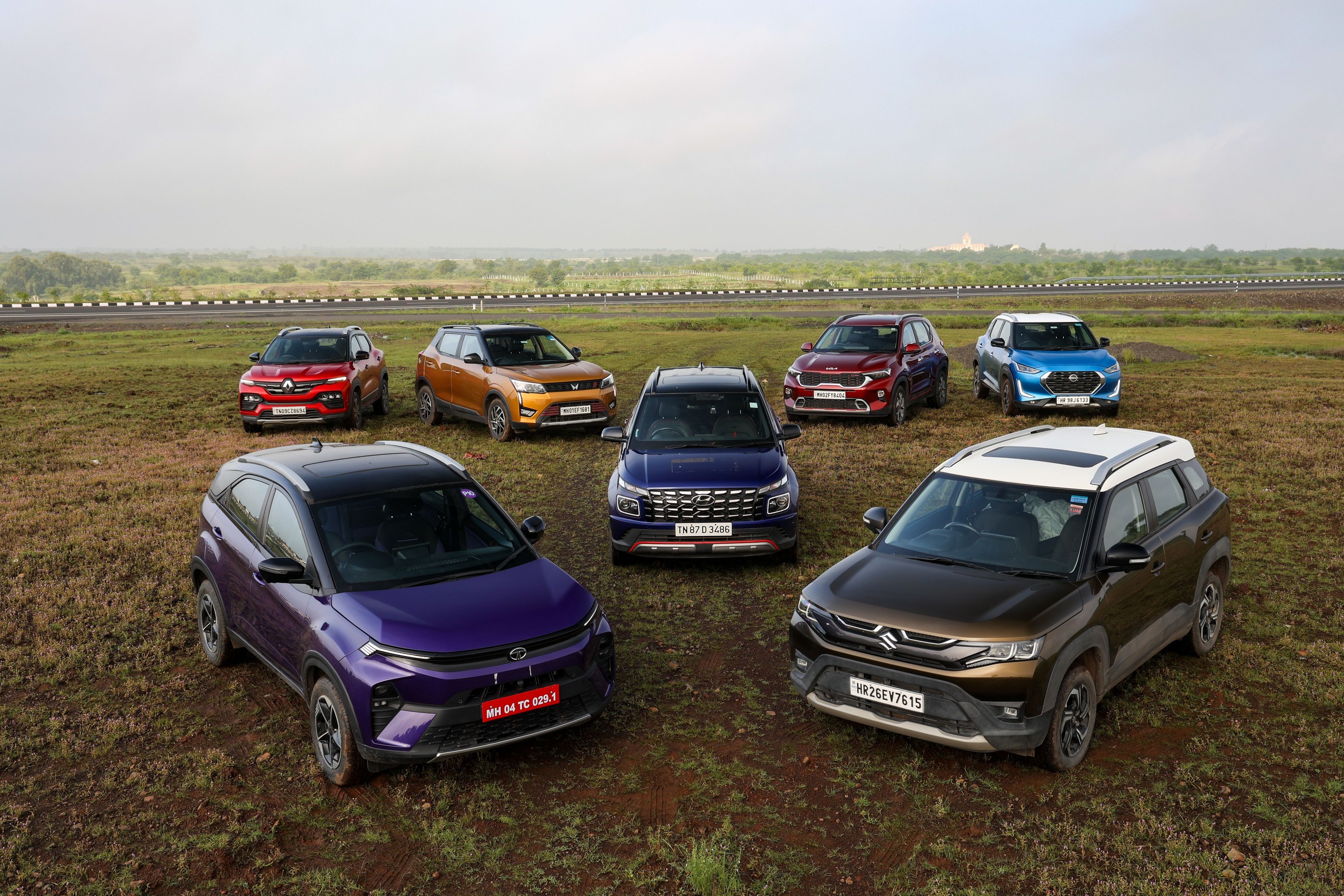 The updated 2023 Tata Nexon goes against its rivals in this compact SUV comparison test
The updated 2023 Tata Nexon goes against its rivals in this compact SUV comparison testThe compact SUV segment is an anomaly. Nowhere else in the world do you see such mighty sales for ‘SUVs’ less than 4m in length. Combine India’s tax laws around the length of cars with a market obsessed with these high-riding compact cars, and you’ve got a booming segment. Of course, it was started by the EcoSport all those years ago and while Ford exited India, every other carmaker worth their salt has a say in that segment today. The Tata Nexon, Maruti Suzuki Brezza, Kia Sonet, Nissan Magnite, Renault Kiger, Hyundai Venue, Mahindra XUV300 — all going for the same piece of pie.
The Tata Nexon is the newest one here. Well, only technically. Its the same platform from the Nexon launched back in 2017 but has now got its second facelift. The Nexon has proved to be the king of this segment, routinely selling north of 10,000 units a month. Sometimes, crossing 15,000. Where does it stand with respect to the competition after this update? That’s what we’re trying to find out today
Watch the full YouTube video of this comparison test on the evo India YouTube channel
2023 Tata Nexon: The updates
The Nexon has got a massive overhaul — the design is sharper and more radical. This purple shade clearly shows it is trying to push boundaries and I must say, it looks really good. Less rounded, more edgy. That edginess is transferred to the inside as well, with the purple interiors. Not everyone’s cup of tea, but Tata is trying to appeal to a younger, more experimental audience here. What’s significant is the tech updates that the Nexon has gotten — a neatly done digital instrument cluster, a large 10.25-inch inch infotainment screen that packs in a load of tech, cooled seats, JBL sound and wireless phone connectively. The only criticism I have here is that the Nexon EV already gets a larger 12.3-inch screen, so why do ICE customers get the short end of the stick?
As for the driving, the Nexon gets a 1.2-litre 3-cyl engine that makes 118bhp and 170Nm. Nothing new here, but what is new is the option of a DCT alongside the AMT. The engine may not be the most refined out there but it puts down its power nicely. The DCT is an improvement and is quick, but it isn’t the smoothest and you do feel some vibes through the steering wheel at certain speeds in certain gears. Acceleration is quick enough at the Nexon did 0-100kmph in 13.19 seconds, not the quickest in this test but not the slowest either. A lot of that is down to the fact that the Nexon’s DCT allows you to launch the car aggressively which a few other cars did not.
The Nexon’s strengths remain its ride and handling balance — it feels robust and grown up. Less like a hatchback on stilts and closer to the more sorted SUVs that are larger and more expensive. Handling is also neat, with good steering feel. This is the same architecture carried over from before so not too much has changed on this front, and that’s a good thing.
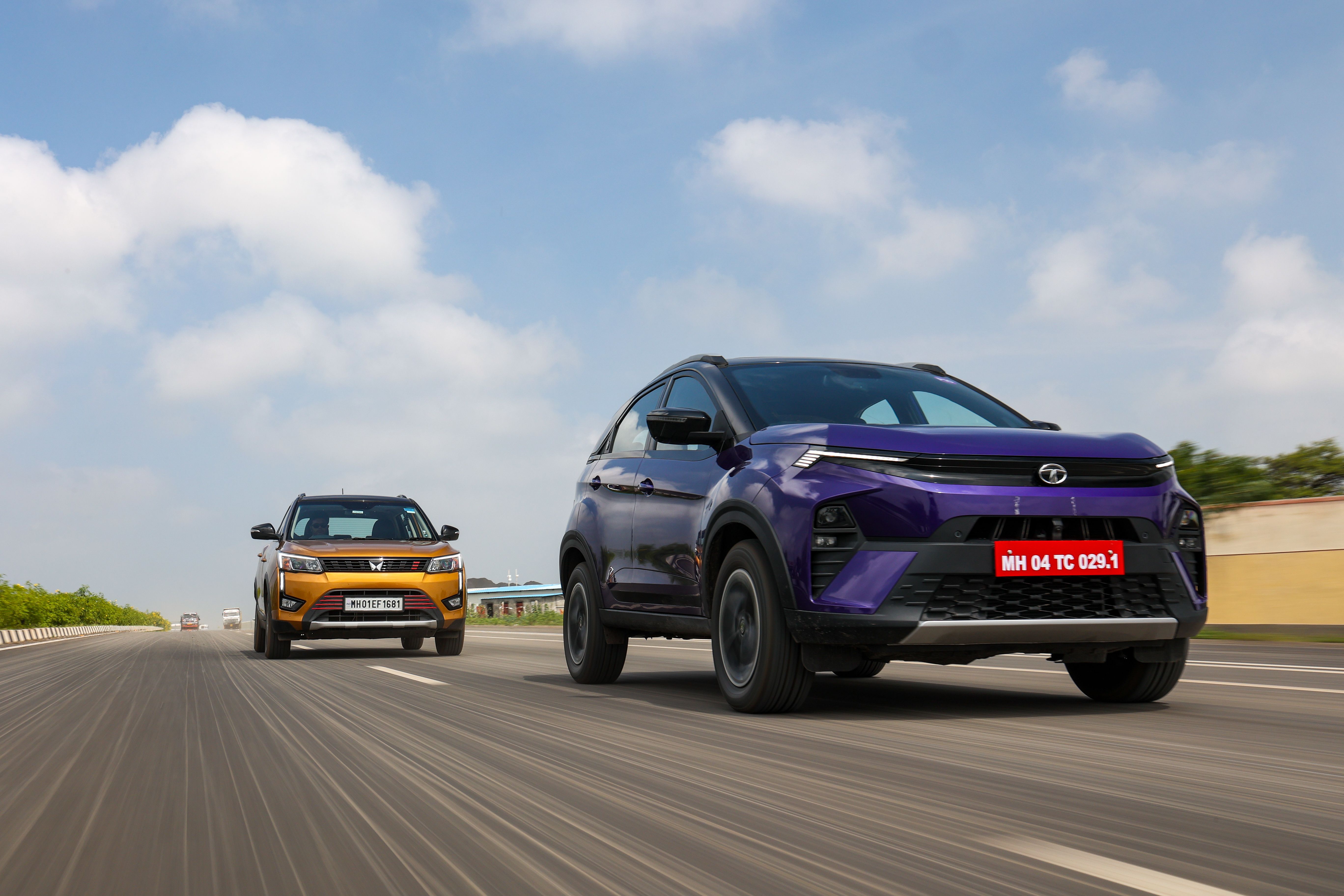
The Nexon’s biggest weakness is the fact that Tata Motors’ attention to detail still needs to improve. Play in switches, feel of buttons, gaps in lines — small things like this dampen what is a brilliantly resolved car.
Maruti Suzuki Brezza: The no-nonsense SUV
Every segment Maruti touches seems to turn to gold and the compact SUV segment is no different. The Brezza came out in 2016 and since then, has been raking in the moolah. It may only have a petrol engine, and that too one that doesn’t qualify from tax breaks, but that doesn’t stop it from posting solid numbers month after month.
The Brezza’s strengths are in how fuss free it is. It has everything you would need — a good infotainment system, space, comfort and refinement. Styling may not be its strong suit, especially after how good the new Nexon looks, but the magic is on the inside. In terms of equipment, you can’t complain. It has wireless CarPlay, a sunroof, head up display and a 360-degree camera. Space in the back is more than adequate. The engine is familiar— that 1.5 petrol engine that makes 102bhp and 137Nm is also in a whole slew of other Marutis. Its quiet, refined and efficient when being driven gently. Pick up the pace and its a joy to wring out, with its nat-asp characteristics urging you to drive it hard. Sure it doesn’t have the punch of the turbo petrols on test here, but there’s a joy to wringing it out. The manual transmission is slick and the clutch is light. But its biggest strength is how efficient it is, giving properly good fuel economy on both the manual and the auto.
As for its dynamics, the ride is comfortable and it rounds of the edges of bad roads competently. After all, this is based on the robust Global C platform. Maruti Suzuki has improved the handling as well with its last update, but its nothing to write home about — there are far more sporty cars in this test. The Brezza then, is an all-rounder that provides comfort, efficiency and features with very little to complain about. As an every day car in the city, it is effortless and easy to drive making it a great choice for people looking for a no-nonsense SUV.
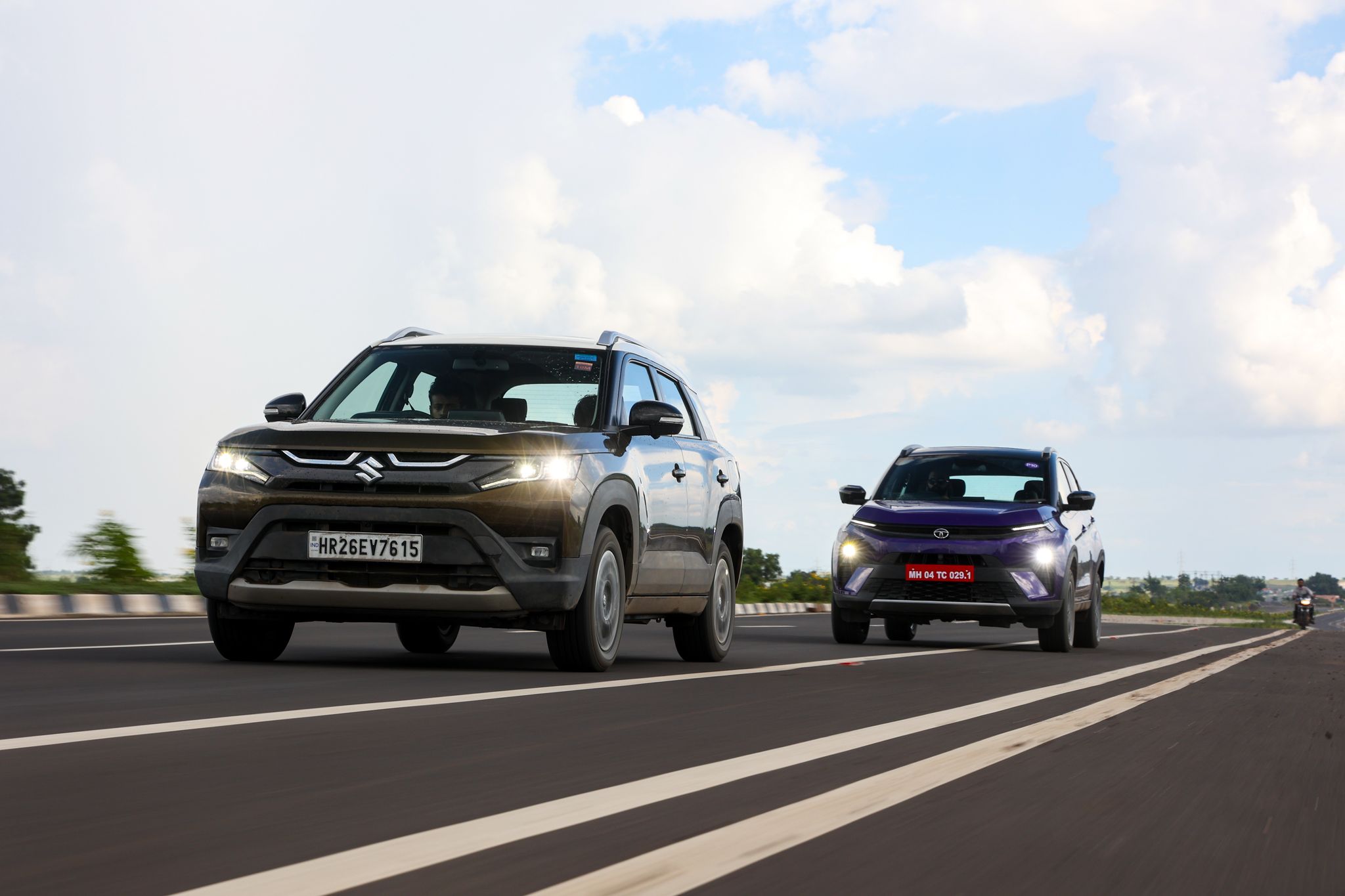
The sporty end: Kia Sonet GT and Hyundai Venue N Line
The Sonet and the Venue have been spun off the same yarn — they share a platform and engines, but they’ve managed to get their own distinct characteristics. Back in 2019 when the Sonet launched, it set new benchmarks of what we could expect of a compact car in terms of styling, equipment and tech. It can still hold its own against today’s lot and that’s saying something. The GT Line certainly looks cool with clear sporty intent, and the all black interiors with the large 10.25-inch screen may be feeling its age compared to the techy Nexon but it only comes of second best in a class of seven. As expected, it comes packing with seat coolers, drive modes, traction modes, Bose sound, paddle shifters — the works.
The engine is a tiny 1-litre turbo that puts out a respectable 118bhp and 172Nm — second best in class, alongside the Venue. It also gets a DCT, and an iMT but mind you, no option of a manual. The engine-transmission combo is sweet. It feels urgent and peppy, and the DCT is snappy but never jerky. Its actually the nicest turbo engine on test here and should enthral the enthusiast. Handling is good too — it feels direct and connected, but the only downside to that is its firm ride. This is set up for sportier driving and you can feel it. If you enjoy driving, you will enjoy the Sonet. The Sonet’s biggest compromise though, is the space in the backseat — it is rather cramped and not as spacious as the other cars here.
The Venue N Line has the same space in the back seat, but its focus is resolutely on the driver. Compared to a standard Venue turbo, it gets sportier suspension and steering along with the whole N Line visual package. It certainly looks cool with the red accents and the N Line badges have genuine motorsport provenance. The driving experience has been taken a notch up as well — with better body control and steering responses. It grips well around corners, and gives you real confidence to push it hard. However, again, this is at the expense of ride quality and is one of the firmer cars in this test.
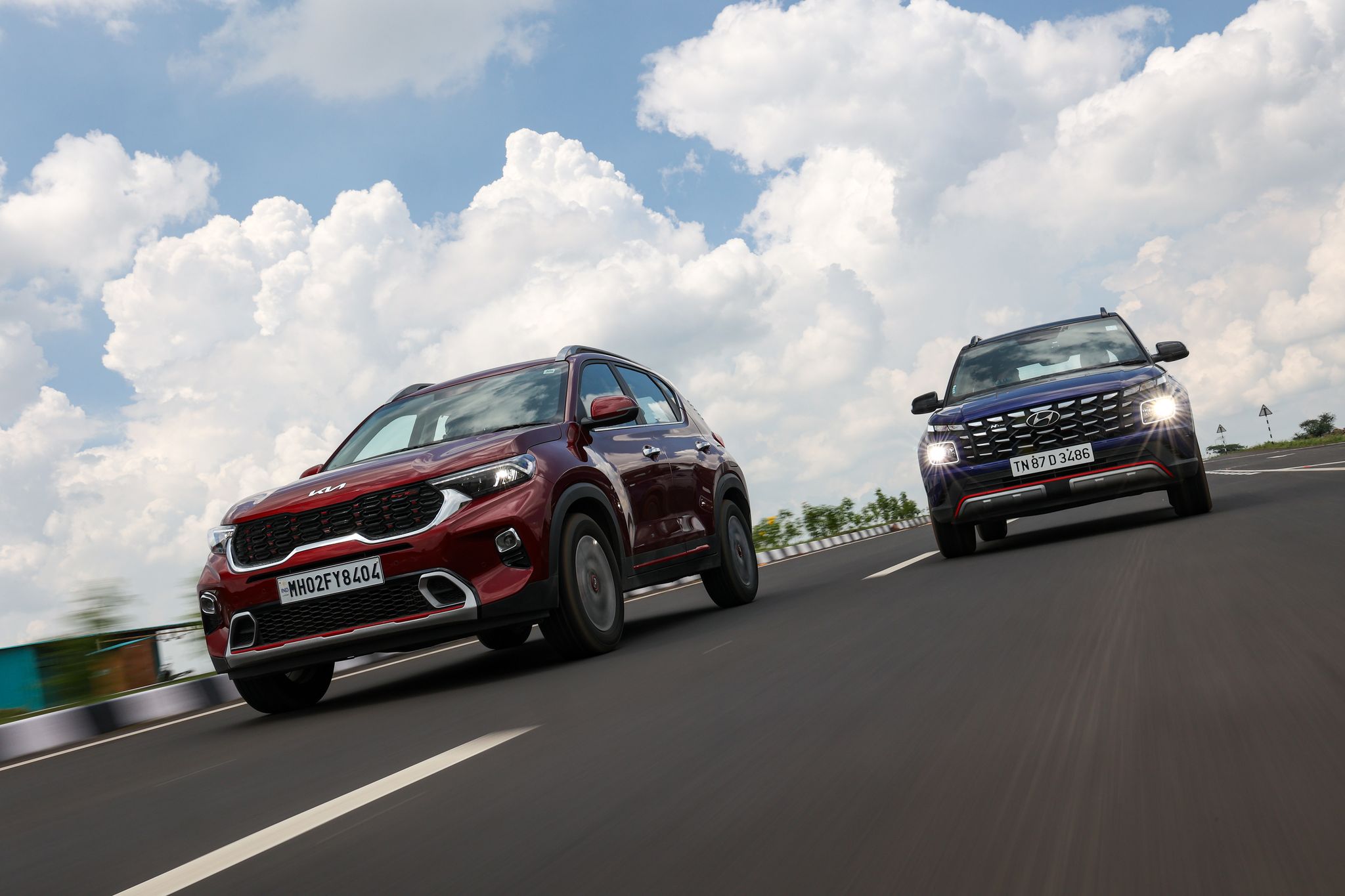
The engine-transmission remains unchanged from the Sonet, and that’s no bad thing. What the N Line does get now is a fruity exhaust note. You can definitely hear it during a cold start, and sounds entertaining when you rev it out. As for equipment, the Venue has always been reasonably well equipped. It misses out on the cooled seats, but now gets a dash cam, and continues with the infotainment and instrument cluster from before.
The driver’s delight: Mahindra XUV300
The XUV300 on test is the Turbosport, with the new T-GDI engine. 129bhp (the highest in this test) with 230Nm and up to 250Nm on overboost. No wonder then, it was the quickest on our 0-100kmph tests. The XUV300 is an out and out driver’s car — it has an engine that packs a solid punch, a gearbox that works nicely. The platform is sorted. Again, much like the Nexon, it feels like a proper SUV but I’d go so far as to say that the XUV300 drives a little bit better than the Nexon even. It rides well and has proper cornering capabilities, allowing you to push it hard and explore its limits. It also has legitimate rally pedigree with Gaurav Gill thrashing it around INRC stages every other weekend.
The chinks in its armour have more to do with its age — the interior is dated, it has the smallest and oldest infotainment screen on this test, the buttons on the dash don’t feel up to scratch with the competition and the seat isn’t that great. And in a modern world, even the best driver’s cars won’t sell if they don’t deliver the comfort and tech that customers want.
If you’re a keen driver and willing to look past its very real shortcomings, there is no other car like the XUV300 in this segment. It feels a lot more connected than the Venue and Sonet as well. The dynamics and character feel really grown up. If only the rest of the car did the same as well.
Value is the name of the game: Nissan Magnite and Renault Kiger
The Magnite and Kiger are of unbelievable value. Where the the other SUVs are stretching things at the top end, the Magnite and Kiger open up the entry level of this segment and do so without too many compromises. Just like the Sonet and Venue, there’s a lot in common here including platforms and engines, and they’re even made on the same production line.
Under the hood, there’s a 1-litre 99bhp engine. And this engine comes mated to either a manual or a CVT, with the CVT being our pick of the lot. 99bhp may not sound like much but these cars are so light that they actually pick up speed reasonably well. In our 0-100kmph tests, they were both quickest after the XUV300. Refinement is adequate and the CVT does have a rubber band effect, but its not too intrusive in to the driving experience. Its actually rather well judged for the city.
Ride quality is good with a focus on comfort, however you do hear a lot of the suspension working and that can be a bit disconcerting. So while the car does physically soak up the bumps well, the impression is of it being a little bit uncomfortable doing so. Handling is stable and again, the fact that these cars are light holds them in good stead with their body control being respectable. A little more planted-ness on the highway would have been nice though. Where the Kiger and Magnite lack compared to the competition is in the material selection. These cars are also really well equipped with proper touchscreens, phone connectivity and good audio systems. They also scored a respectable 4 stars in the GNCAP crash tests, so don’t mistake their lightness for flimsiness. However, a bid to be priced better, materials don’t feel as premium — hard plastics on the dash and fabric seats don’t match up the tactile sensations that the rest of the segment provides.
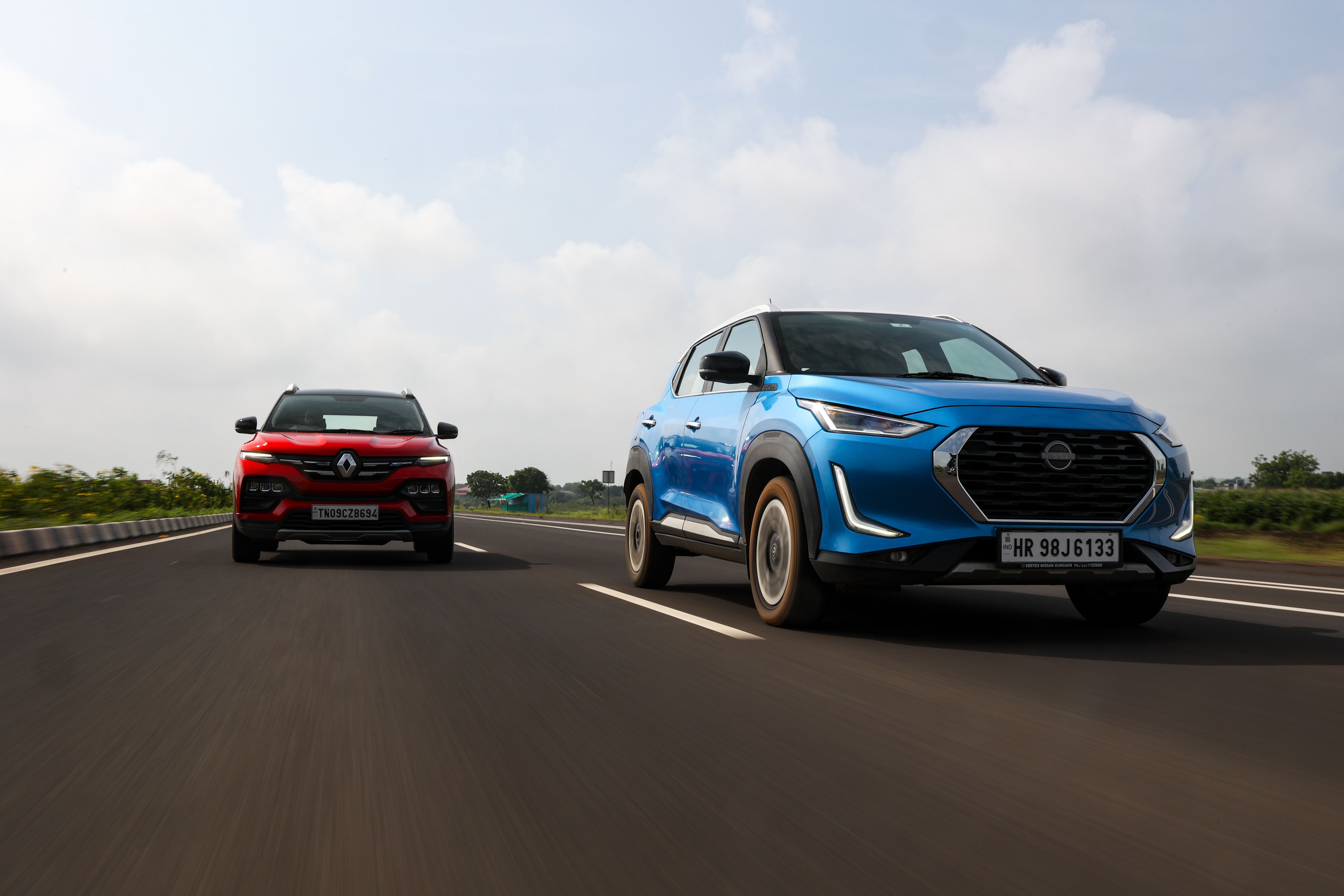
Both these cars are a lot of car for the money, actually going toe to toe with micro SUVs on price, while punching in the compact SUV segment. If budget is a concern, the Magnite and Kiger are certainly a top pick.
The Verdict: The Nexon is the SUV to beat
At the end of the day, there’s a car in here for everyone. Each of them have their strengths and weaknesses, and it comes down to where you’re willing to compromise and where you aren’t. The hardcore enthusiast who wants a driver’s car would pick the XUV. If they want more by way of features, then the Kia and Hyundai with their sporty styling and sporty driving mannerisms, are the way to go. The Brezza is a great city slicker and should be a consideration if comfort is your focus, alongside the Kiger and the Magnite. The latter two are perfect if you’re looking for bang for your buck. The car that remains the king though, is the Nexon. It pushes the boundaries on the inside and out, refines its driving experience with the DCT and is probably the most desirable of this lot. There are holes you can pick in its arsenal, but all in all, its a hard car to beat.
evo India is expanding in to Hindi content — catch this full review on evo Bharat, our new Hindi channel!


